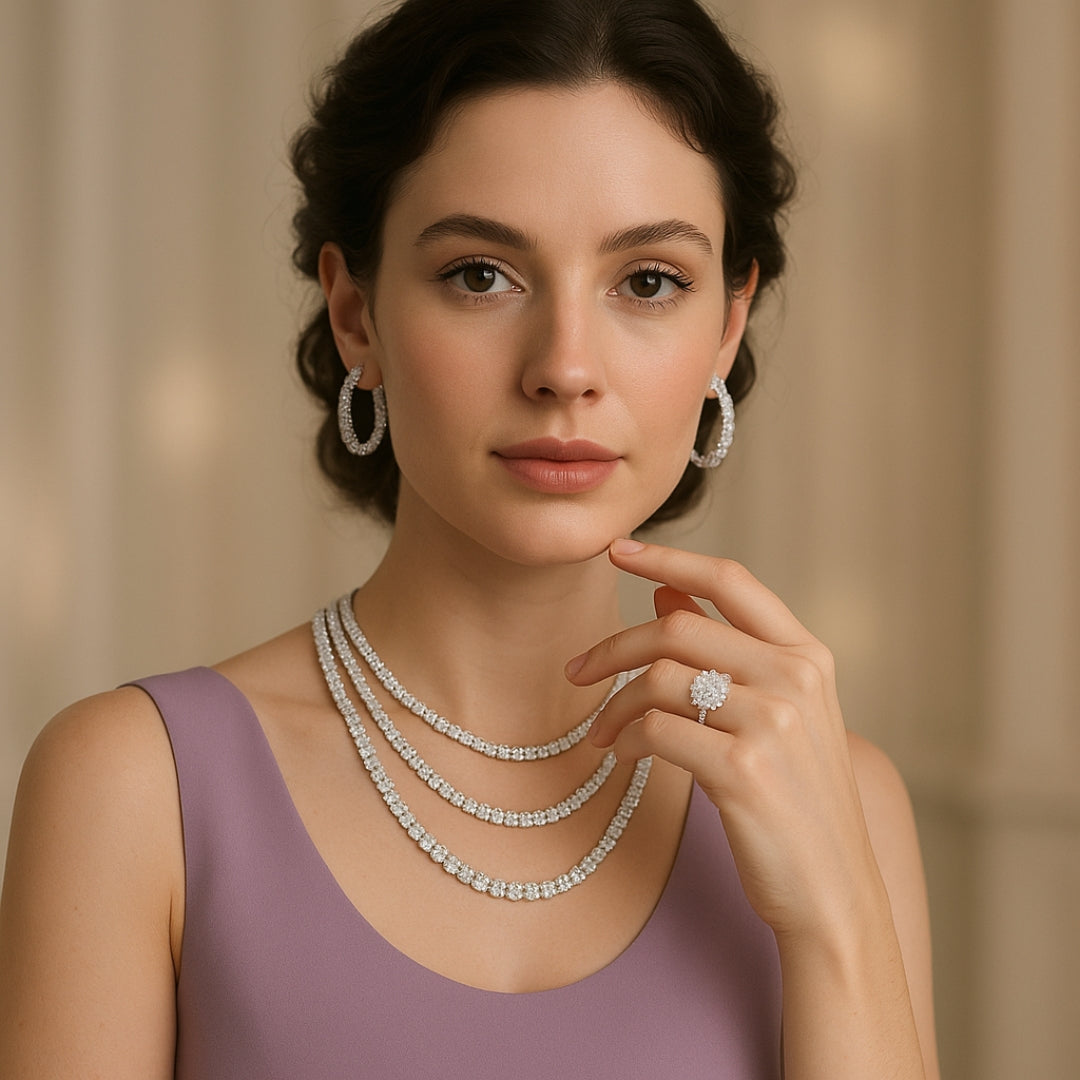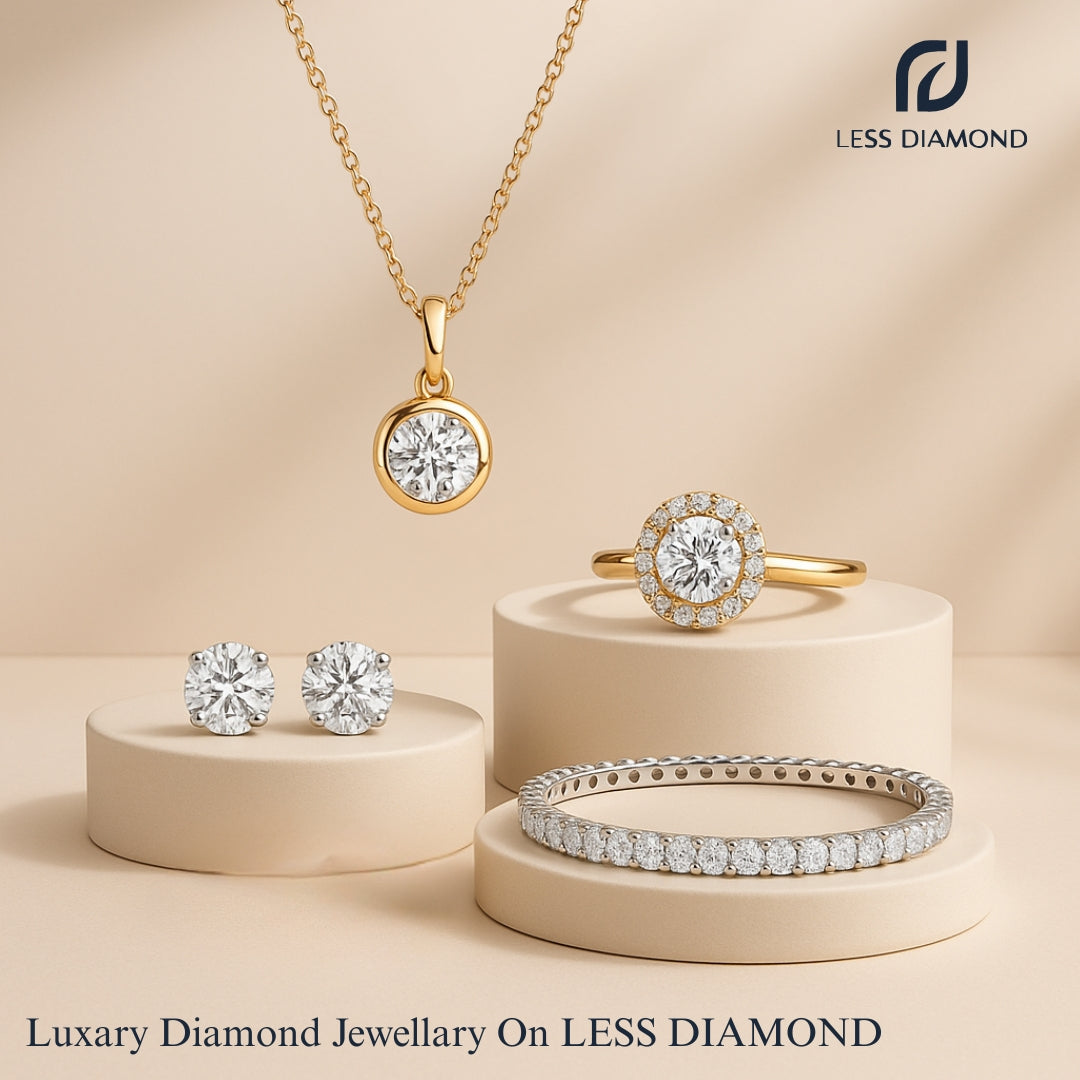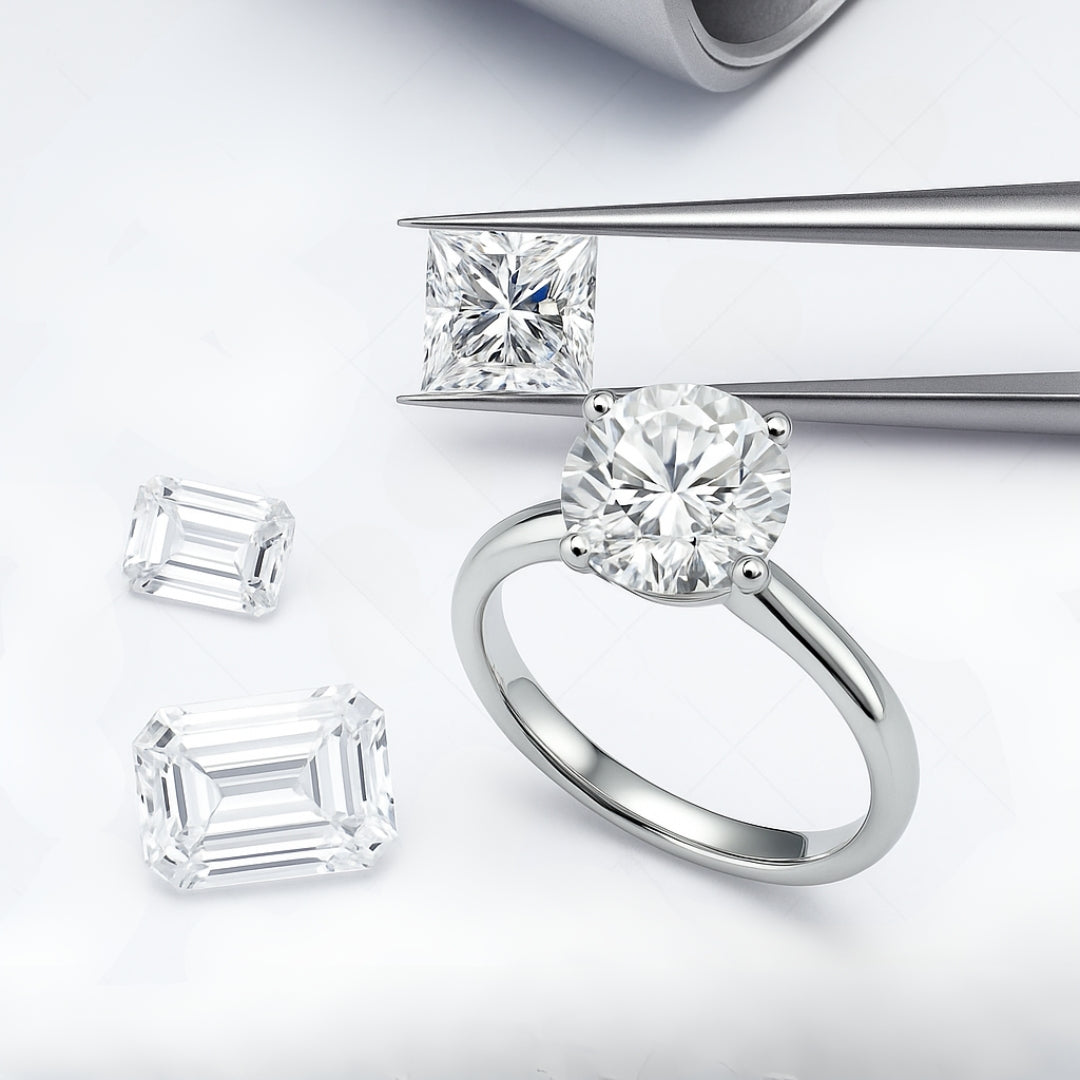From Mine To Market: The Journey Of A Diamond

|
Table of Contents:
|
Diamonds Are One Of Nature’s Most Stunning Creations, Coveted For Their Brilliance, Beauty, And Rarity. But Before A Diamond Dazzles In A Piece Of Jewelry, It Embarks On An Incredible Journey From The Depths Of The Earth To Your Favourite Jewelry Store. Understanding This Journey Not Only Enhances Your Appreciation For These Gemstones But Also Sheds Light On The Meticulous Processes Involved In Bringing A Diamond From Mine To Market. Let’s Explore The Fascinating Journey Of A Diamond.
Formation: Deep Within The Earth
The Journey Of A Diamond Begins Deep Within The Earth’s Mantle, Where Extreme Heat And Pressure Cause Carbon Atoms To Crystallize And Form Diamonds. This Process Occurs Over Billions Of Years, Approximately 90 To 150 Miles Beneath The Earth's Surface. Volcanic Activity Then Brings These Precious Stones Closer To The Earth’s Surface Through Kimberlite Pipes, Which Are Volcanic Conduits That Act As The Primary Source Of Diamonds.
Moissanite 3.70 CT Round Cut Diamond Mid-Century Handmade Ring
Mining: Unearthing The Gems
Once Near The Surface, Diamonds Are Extracted Through Various Mining Methods:
- Open-Pit Mining: This Method Involves Removing Large Quantities Of Soil And Rock To Access Diamond-Rich Deposits Near The Earth’s Surface.
- Underground Mining: For Deeper Deposits, Underground Tunnels Are Created To Extract Diamonds.
- Alluvial Mining: This Technique Is Used To Recover Diamonds From Riverbeds, Beaches, And Ocean Floors Where They Have Been Naturally Deposited By Erosion.
Mining Operations Are Typically Located In Regions Like Africa, Russia, Canada, And Australia, Which Are Known For Their Rich Diamond Deposits.
Sorting And Valuation: Identifying Quality
Once Extracted, Rough Diamonds Are Sorted And Valued Based On Several Criteria:
- Size: Larger Diamonds Are Rarer And More Valuable.
- Color: Diamonds Range In Color From Clear To Various Shades Of Yellow, Brown, And Even Rare Colors Like Blue And Pink.
- Clarity: This Refers To The Presence Of Inclusions Or Blemishes Within The Diamond.
- Shape: The Natural Shape Of The Rough Diamond Influences How It Will Be Cut.
This Sorting Process Is Crucial As It Determines The Potential Use Of Each Diamond, Whether For Industrial Applications Or As A Gemstone.
Cutting And Polishing: Revealing The Brilliance
The True Beauty Of A Diamond Is Unlocked Through Cutting And Polishing. This Process Involves Several Steps:
- Planning: Expert Gemologists Use Advanced Technology To Plan The Optimal Cut For Each Diamond, Maximizing Its Potential Brilliance And Value.
- Cleaving/Sawing: The Rough Diamond Is Split Into Smaller Pieces Using Lasers Or Mechanical Saws.
- Bruting: This Step Shapes The Diamond Into A Round Form By Grinding Two Diamonds Against Each Other.
- Faceting: Skilled Craftsmen Cut And Polish The Facets Of The Diamond, A Process That Requires Precision And Expertise. The Standard Brilliant Cut, For Instance, Involves 57 Or 58 Facets, Each Meticulously Placed To Enhance The Diamond’s Sparkle.
Design And Setting: Crafting The Jewelry
Diamonds Are Then Ready To Be Set Into Jewelry. Jewelry Designers And Craftsmen Play A Crucial Role In This Phase, Transforming Loose Diamonds Into Stunning Pieces. The Design Process Involves:
- Conceptualizing: Designers Create Sketches And 3D Models To Visualize The Final Piece.
- Casting: The Metal Framework For The Jewelry Is Created, Typically Using Gold, Platinum, Or Silver.
- Setting: The Diamond Is Meticulously Set Into The Metal Framework, Ensuring It Is Secure And Showcased To Its Fullest Potential.
- Finishing: The Piece Is Polished And Finished To Enhance Its Appearance.
Market: Reaching The Consumer
Finally, The Completed Piece Of Diamond Jewelry Reaches The Market. This Can Happen Through Various Channels:
- Retail Stores: Traditional Brick-And-Mortar Stores Where Customers Can See And Try On Jewelry.
- Online Stores: E-Commerce Platforms That Offer A Wide Range Of Diamond Jewelry, Often With Detailed Images, Videos, And Virtual Try-On Features.
- Auctions And Exhibitions: High-End Pieces And Rare Diamonds Are Often Sold Through Auctions Or Showcased At Exhibitions.
Consumers Are Increasingly Demanding Transparency And Ethical Practices, Influencing The Market Towards More Responsible Sourcing.
Conclusion
The Journey Of A Diamond From Mine To Market Is A Remarkable One, Involving A Blend Of Natural Processes, Human Expertise, And Technological Advancements. Each Step, From Formation Deep Within The Earth To The Final Setting In A Piece Of Jewelry, Adds To The Unique Story Of Every Diamond. Understanding This Journey Not Only Enhances Your Appreciation For These Precious Gems But Also Underscores The Value Of Craftsmanship And Ethical Sourcing In The Jewelry Industry.
Next Time You Admire A Diamond, Remember The Incredible Journey It Has Undertaken To Become A Symbol Of Beauty, Love, And Elegance. Whether You’re Purchasing For Yourself Or As A Gift, Each Diamond Carries With It A Story Of Transformation And Timeless Allure.














